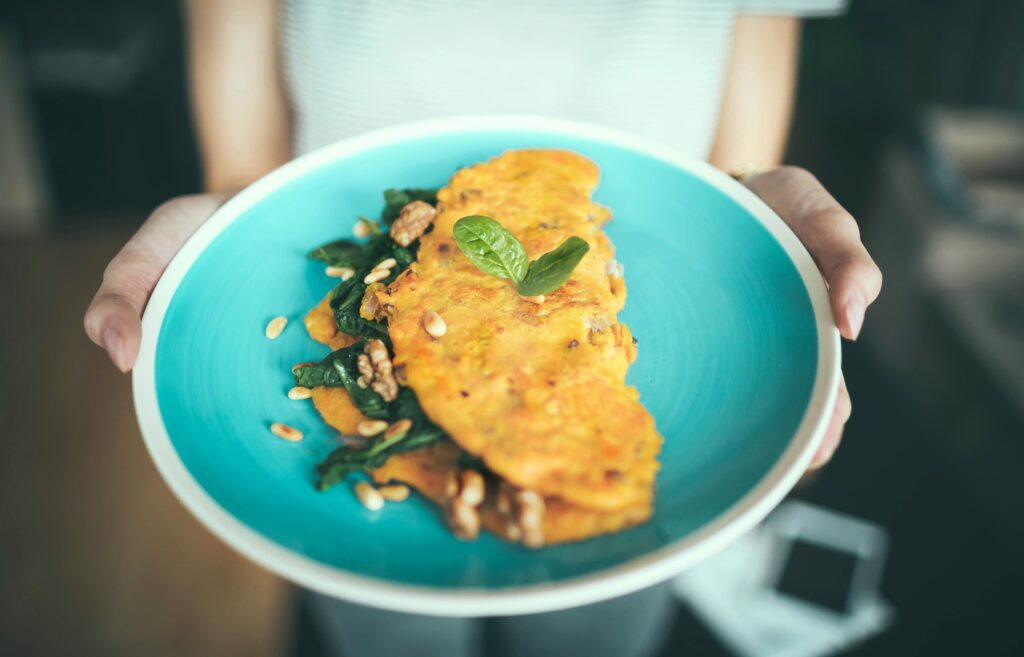Eggs are an incredible superfood that pack a punch in terms of nutrition, versatility, and flavor. Whether you’re an experienced cook or a beginner in the kitchen, eggs are a staple ingredient that can elevate any meal. With high-quality protein, essential vitamins like B12 and D, and healthy fats, they are perfect for supporting muscle repair, aiding in weight loss, and providing sustained energy throughout the day. Here are seven delicious ways to incorporate eggs into your meals that will keep your taste buds excited and your body nourished.
- 1. Classic Scrambled Eggs
- 2. Hard-boiled Eggs
- 3. Eggs on Toast
- 4. Omelet
- 5. Egg Muffins (Quiche Muffins)
- 6. Shakshuka
- 7. Egg Fried Rice

1. Classic Scrambled Eggs
Scrambled eggs are an all-time favorite for a reason—they’re simple, quick, and incredibly versatile. Perfect for breakfast, lunch, or even dinner, scrambled eggs can be served plain or paired with your favorite add-ons. For an elevated version, try adding shredded cheese, a pinch of herbs like chives or parsley, or sautéed vegetables such as mushrooms, onions, and spinach.
Tip: Use a splash of milk or cream to make your scrambled eggs fluffier. Cook them on low heat, stirring continuously, for the creamiest texture.

2. Hard-boiled Eggs
The thing about hard-boiled eggs is that they’re portable, protein-packed, and can be stored in the fridge for up to a week. Besides eating them plain with a dash of salt and pepper, you can slice them onto salads, mix them into potato dishes, or create a delicious egg salad with mayonnaise, mustard, and herbs.
Tip: For a spicy kick, sprinkle hard-boiled eggs with paprika or chili flakes. They also make an excellent topping for avocado toast or ramen bowls.

3. Eggs on Toast
The classic eggs-on-toast combination is a breakfast and brunch staple for good reason. Whether you like your eggs poached, fried, or scrambled, this dish is quick, satisfying, and endlessly customizable. Add toppings like smashed avocado, roasted tomatoes, smoked salmon, or a sprinkle of feta cheese for extra flavor.
Tip: Upgrade your toast game by using sourdough or whole-grain bread for added texture and nutrients. Drizzle with olive oil or spread with hummus for a Mediterranean twist.

4. Omelet
Omelets are a blank canvas for creativity. This versatile dish can be tailored to suit any palate or dietary preference. Fillings like cheese, mushrooms, spinach, bell peppers, and diced ham turn a plain omelet into a satisfying, nutrient-rich meal.
How to Perfect Your Omelet: Whisk your eggs thoroughly with a pinch of salt and cook them over medium heat. Add your fillings once the eggs begin to set, then fold and cook until done.
Tip: Opt for heart-healthy fillings like avocados, kale, or grilled chicken breast to make your omelet both delicious and nutritious.

5. Egg Muffins (Quiche Muffins)
Of course, we had to add egg muffins to the mix. Egg muffins, or mini frittatas, are an excellent make-ahead option for busy mornings. These small, protein-packed bites are baked in a muffin tin and can be stored in the fridge for a quick snack or breakfast. You can customize your egg muffins with a variety of ingredients, including diced vegetables, cooked bacon, or shredded cheese.
Easy Recipe: Whisk eggs with milk, season with salt and pepper, and pour into a greased muffin tin. Add your preferred fillings and bake at 180°C for about 20 minutes or until set.
Tip: Wrap your egg muffins in foil or store them in resealable bags for a portable snack during commutes or at the office.

6. Shakshuka
Shakshuka is a Middle Eastern dish that combines eggs poached in a spicy, tangy tomato sauce. This flavorful meal is perfect for brunch or a light dinner. The rich sauce, made with tomatoes, bell peppers, onions, garlic, and spices like cumin and paprika, pairs wonderfully with crusty bread for dipping.
How to Make It: Sauté onions, garlic, and bell peppers in olive oil. Add canned tomatoes and seasonings, then simmer until the sauce thickens. Make small wells in the sauce and crack eggs into them. Cover and cook until the eggs reach your desired doneness.

7. Egg Fried Rice
Lastly, we have Uncle Roger’s ever-popular… Egg Fried Rice. Who doesn’t love a good bowl of fried rice? This is a quick, budget-friendly meal that transforms leftover rice into a delicious, hearty dish. All you need are eggs, cooked rice, and a few seasonings. Add veggies, diced chicken, or prawns to make it even more filling.
Tip: Use day-old rice for the best texture. Heat oil in a wok, scramble the eggs, then stir-fry the rice with soy sauce, garlic, and your choice of vegetables.
Final Thoughts
Incorporating eggs into your meals is an easy and delicious way to boost your protein intake and enjoy a variety of nutrients essential for your health. Whether you’re looking to support weight loss, build muscle, or simply enjoy a nutritious meal, eggs offer a versatile solution that can be adapted to any meal of the day.












You must be logged in to post a comment.